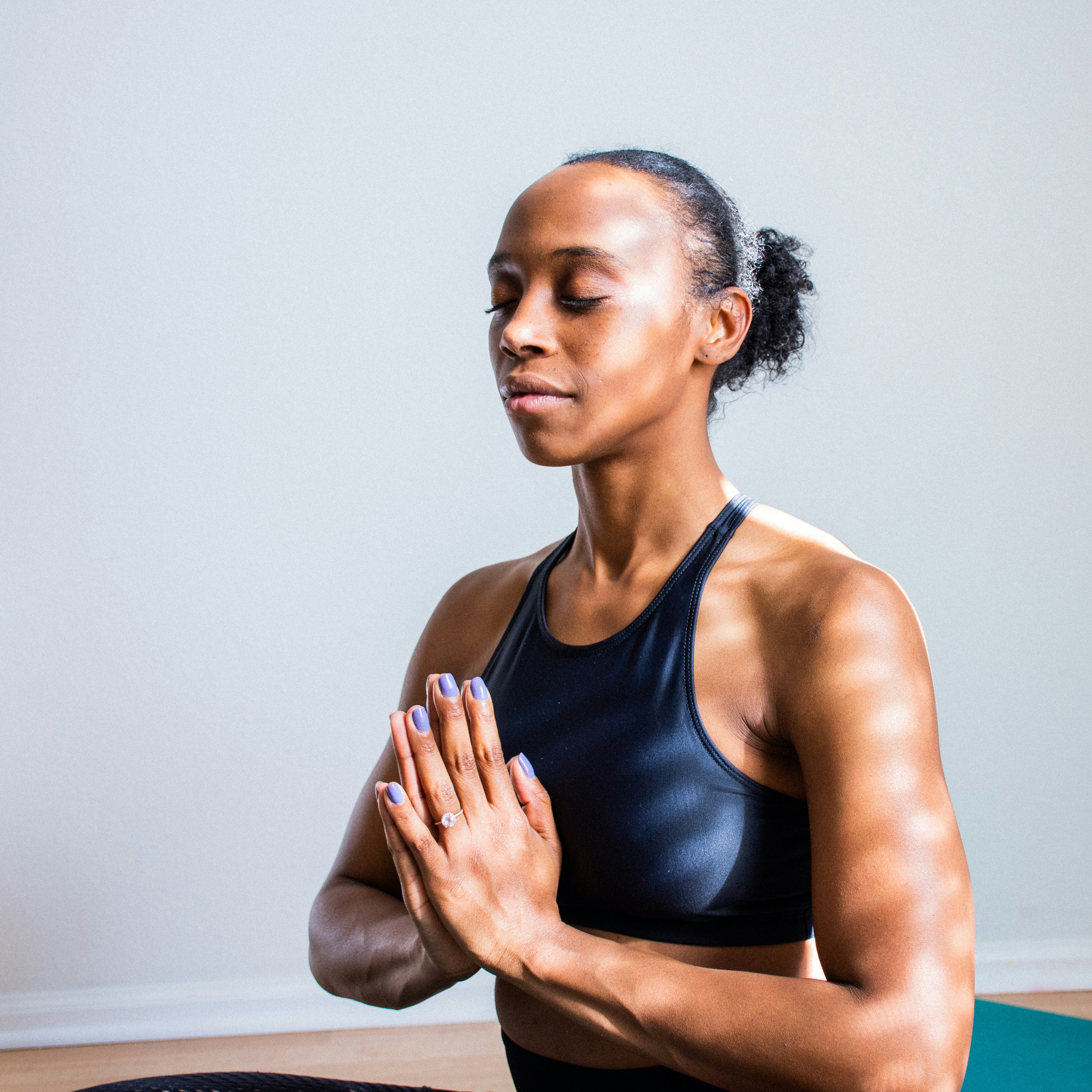Learn effective breathing techniques to relieve stress and improve well-being. Reduce anxiety, enhance relaxation, and find inner peace with these techniques.
In this article, you will discover ten effective breathing techniques that can provide relief from stress and offer additional benefits for your overall well-being. These simple yet powerful techniques have been carefully curated to help you counteract the negative effects of stress and find a calm and centered state of mind. By incorporating these breathing techniques into your daily routine, you will be able to reduce anxiety, improve concentration, enhance relaxation, and promote a sense of inner peace. Whether you are seeking immediate stress relief or a long-term strategy to manage stress, these ten breathing techniques are a valuable tool to have in your arsenal.
The Importance of Breathing Techniques for Stress Relief
In today’s fast-paced and demanding world, stress has become an inevitable part of our lives. It can affect our physical and mental well-being, leaving us feeling overwhelmed, anxious, and exhausted. However, one powerful tool that we often overlook when it comes to managing stress is our breath. Harnessing the power of breath through various breathing techniques can be a game-changer in relieving stress and promoting overall well-being. In this article, we will explore ten effective breathing techniques that can help you find peace, calmness, and relief from stress.
How stress affects our breathing
When we experience stress, our body enters into a ‘fight or flight’ response, activating the sympathetic nervous system. This physiological response leads to rapid and shallow breathing, also known as chest breathing. The chest muscles tighten, and the breath becomes shallow, depriving our body of the oxygen it needs to function optimally. Consequently, this can further exacerbate stress and anxiety, creating a cycle that is difficult to break. By understanding how stress affects our breathing, we can begin to see the importance of incorporating specific breathing techniques to counteract these negative effects and promote relaxation.

Benefits of breathing techniques for stress relief
Breathing techniques can have a profound impact on our physical, mental, and emotional well-being. By practicing these techniques regularly, we can experience a multitude of benefits, including:
-
Reduced stress and anxiety: Breathing techniques help activate the parasympathetic nervous system, promoting relaxation and reducing the production of stress hormones such as cortisol.
-
Improved focus and clarity: Deep breathing techniques bring more oxygen to the brain, enhancing cognitive function and improving mental clarity.
-
Enhanced energy levels: Proper breathing techniques optimize oxygen intake, boosting energy levels and combating fatigue.
-
Better sleep quality: By calming the mind and relaxing the body, breathing techniques can promote a restful state and improve sleep quality.
-
Lowered blood pressure: Deep, slow breathing techniques can help regulate blood pressure levels, aiding cardiovascular health.
-
Enhanced immune function: Deep breathing techniques promote a state of relaxation, which can boost the immune system’s ability to fight off illnesses and infections.
-
Increased self-awareness: Practicing breathing techniques requires focus and mindfulness, which can improve self-awareness and help in managing emotions effectively.
Now, let’s explore some of the most effective breathing techniques for stress relief in detail.
1. Diaphragmatic Breathing
Diaphragmatic breathing, also known as belly breathing or deep breathing, is a foundational technique for stress relief. It involves intentionally breathing deeply into the diaphragm, expanding the belly instead of the chest. This technique helps relax the body, slow down the heart rate, and increase oxygen flow.
How to practice diaphragmatic breathing
- Find a quiet and comfortable place to sit or lie down.
- Place one hand on your chest and the other on your belly.
- Inhale deeply through your nose, allowing your belly to rise as you fill your lungs with air.
- Exhale slowly through your mouth, gently contracting your belly to release the air.
- Repeat this process for several minutes, focusing on the sensation of your breath and the movement of your belly.
Benefits of diaphragmatic breathing
- Diaphragmatic breathing activates the relaxation response, reducing stress levels and promoting a sense of calmness.
- It improves lung capacity and oxygenates the blood, enhancing overall respiratory function.
- This technique can help alleviate symptoms of anxiety, panic attacks, and even chronic pain.
- Diaphragmatic breathing is a simple and easily accessible tool that can be practiced anywhere, anytime.

2. Box Breathing
Box breathing, also known as square breathing, is a technique commonly used in meditation and yoga practices. It involves inhaling, holding the breath, exhaling, and holding the breath again in equal counts. This rhythmic pattern helps synchronize the breath and calm the mind.
How to practice box breathing
- Find a comfortable seated position with your spine straight.
- Inhale deeply through your nose while counting to four.
- Hold your breath for a count of four.
- Exhale slowly through your mouth while counting to four.
- Hold your breath again for a count of four.
- Repeat this cycle for several minutes, maintaining a steady rhythm.
Benefits of box breathing
- Box breathing helps regulate the body’s stress response and promotes relaxation.
- It reduces anxiety and improves mental clarity and focus.
- This technique can be practiced discreetly, making it suitable for stressful situations or moments of tension.
- Box breathing creates a sense of control and stability, helping to alleviate feelings of being overwhelmed.
3. Progressive Muscle Relaxation
Progressive muscle relaxation is a technique that involves intentionally tensing and then relaxing different muscle groups to promote physical and mental relaxation. This method helps release tension and promotes a deep sense of calmness.
How to practice progressive muscle relaxation
- Find a quiet and comfortable place to sit or lie down.
- Starting from your toes, inhale deeply and tense your toes for a few seconds.
- Exhale slowly and release the tension in your toes, allowing them to relax completely.
- Continue this process, moving up through your legs, abdomen, chest, arms, hands, neck, and face, tensing and releasing each muscle group.
- Focus on the sensations of relaxation and let go of any tension or stress.
Benefits of progressive muscle relaxation
- Progressive muscle relaxation helps release physical tension and reduces muscle stiffness and soreness.
- This technique promotes deep relaxation, aiding in the reduction of anxiety and stress.
- It enhances body awareness and helps individuals recognize signs of tension in their body.
- Progressive muscle relaxation can be combined with other breathing techniques for a more comprehensive stress relief experience.

4. Alternate Nostril Breathing
Alternate nostril breathing, also known as Nadi Shodhana, is a technique originating from yoga. It involves consciously alternating the breath between the left and right nostrils, bringing balance to the body and mind.
How to practice alternate nostril breathing
- Find a comfortable seated position with your spine straight.
- Place your left hand on your left knee with the palm facing upward.
- Bring your right hand toward your nose, with the index and middle fingers resting between your eyebrows.
- Gently close your right nostril with your right thumb, inhale deeply through your left nostril.
- Close your left nostril with your ring finger, release the right nostril, and exhale slowly.
- Inhale through the right nostril, close it with your thumb, and exhale through the left nostril.
- Continue this cycle, alternating the breath between the nostrils, for several minutes.
Benefits of alternate nostril breathing
- Alternate nostril breathing balances the left and right hemispheres of the brain, promoting mental clarity and focus.
- It helps regulate and balance the flow of energy throughout the body, promoting overall well-being.
- This technique reduces anxiety, stress, and racing thoughts, creating a sense of inner peace and calmness.
- Alternate nostril breathing can be practiced before important events or during moments of high stress to restore equilibrium.
5. Lion’s Breath
Lion’s breath is a unique breathing technique that combines deep breaths and vocalization. It is often used in yoga practices as a way to release tension and connect with one’s inner strength.
How to practice lion’s breath
- Start by finding a comfortable seated position with your spine straight.
- Take a deep inhalation through your nose, filling your lungs with air.
- As you exhale, open your mouth wide, stick out your tongue, and make a “ha” sound forcefully, imagining that you are releasing all the tension and stress from your body.
- Repeat this process for several rounds, being mindful of the release of tension with each exhalation.
Benefits of lion’s breath
- Lion’s breath helps release tension in the facial muscles, jaw, and throat.
- It activates the parasympathetic nervous system, promoting relaxation and reducing stress.
- Lion’s breath brings a playful element into breathing exercises, enhancing feelings of joy and lightness.
- This technique can promote self-expression and help individuals release pent-up emotions.
6. 4-7-8 Breathing
4-7-8 breathing is a simple yet powerful technique that aims to regulate the breath, calm the mind, and induce a state of relaxation. It is known for its soothing effect on the mind and body.
How to practice 4-7-8 breathing
- Find a comfortable seated position or lie down.
- Softly close your eyes and take a few deep breaths to relax.
- Inhale through your nose for a count of four, feeling the breath filling your abdomen.
- Hold your breath for a count of seven, focusing on the sensation of stillness.
- Exhale slowly through your mouth for a count of eight, releasing any tension or stress.
- Repeat this sequence three to four times, allowing your breath to flow effortlessly.
Benefits of 4-7-8 breathing
- 4-7-8 breathing stimulates the vagus nerve, activating the body’s relaxation response and reducing stress.
- It can help individuals fall asleep faster and experience better sleep quality.
- This technique can be practiced anywhere, anytime, making it a convenient tool for stress relief.
- 4-7-8 breathing provides a sense of control over the breath, promoting feelings of calm and serenity.
7. Belly Breathing
Belly breathing, also referred to as abdominal breathing or deep belly breathing, is a technique that facilitates deep, diaphragmatic breaths. By focusing on deep inhale and exhale through the belly, this technique promotes relaxation and stress relief.
How to practice belly breathing
- Find a quiet and comfortable place to sit or lie down.
- Place one hand on your chest and the other on your belly.
- Take a slow and deep breath in through your nose, allowing your belly to rise as if filling it with air.
- Exhale slowly through your mouth, observing your belly sinking back down.
- Continue this process, focusing on the movement of your belly with each breath.
Benefits of belly breathing
- Belly breathing activates the diaphragm, enhancing oxygen intake and improving lung capacity.
- It relaxes the body and mind, leading to a reduction in stress and anxiety symptoms.
- Belly breathing can be practiced as a meditation technique, promoting mindfulness and present-moment awareness.
- This technique is easily adaptable to different situations and can be used as an instant stress relief tool.
8. Kapalabhati Breath
Kapalabhati breath, also known as breath of fire, is a powerful energizing breath technique originating from yoga. It involves forceful exhalations followed by passive inhalations, creating a cleansing effect in the body and mind.
How to practice kapalabhati breath
- Find a comfortable seated position with your spine straight.
- Place your hands on your lower abdomen, just above the hip bones.
- Inhale deeply through your nose, filling your belly with air.
- Exhale forcefully through your nose, contracting your abdomen towards your spine.
- Allow the inhalation to occur naturally and passively.
- Repeat this process, focusing on the forceful exhalation and passive inhalation.
Benefits of kapalabhati breath
- Kapalabhati breath boosts energy levels and invigorates the body and mind.
- It helps clear the mind and increase mental focus and concentration.
- Kapalabhati breath stimulates the detoxification process and improves the functioning of the lungs.
- This technique promotes improved digestion and can alleviate symptoms of fatigue and lethargy.
9. Resonant or Coherent Breathing
Resonant or coherent breathing is a technique that focuses on establishing a regular, rhythmic breathing pattern. By synchronizing the breath with a specific count, this technique helps balance the autonomic nervous system and bring a sense of tranquility.
How to practice resonant or coherent breathing
- Find a comfortable seated position or lie down.
- Close your eyes and take a moment to relax and ground yourself.
- Inhale slowly through your nose for a count of four.
- Exhale through your nose or mouth for a count of four.
- Continue this rhythm, maintaining an equal duration for both inhalation and exhalation.
- Gradually increase the count, aiming for longer inhalations and exhalations.
Benefits of resonant or coherent breathing
- Resonant breathing activates the parasympathetic nervous system, inducing relaxation and reducing stress.
- It helps regulate heart rate variability and promotes cardiovascular health.
- Resonant breathing can improve emotional well-being, reducing feelings of anger, tension, and irritability.
- This technique enhances mind-body connection and fosters a sense of inner balance and harmony.
Incorporating breathing techniques into your daily routine can have a profound impact on your overall well-being. By practicing diaphragmatic breathing, box breathing, progressive muscle relaxation, alternate nostril breathing, lion’s breath, 4-7-8 breathing, belly breathing, kapalabhati breath, and resonant or coherent breathing, you can effectively reduce stress, promote relaxation, and enhance your physical, mental, and emotional health. Take a deep breath, embrace the power of breath, and embark on a journey towards a stress-free and balanced life.


